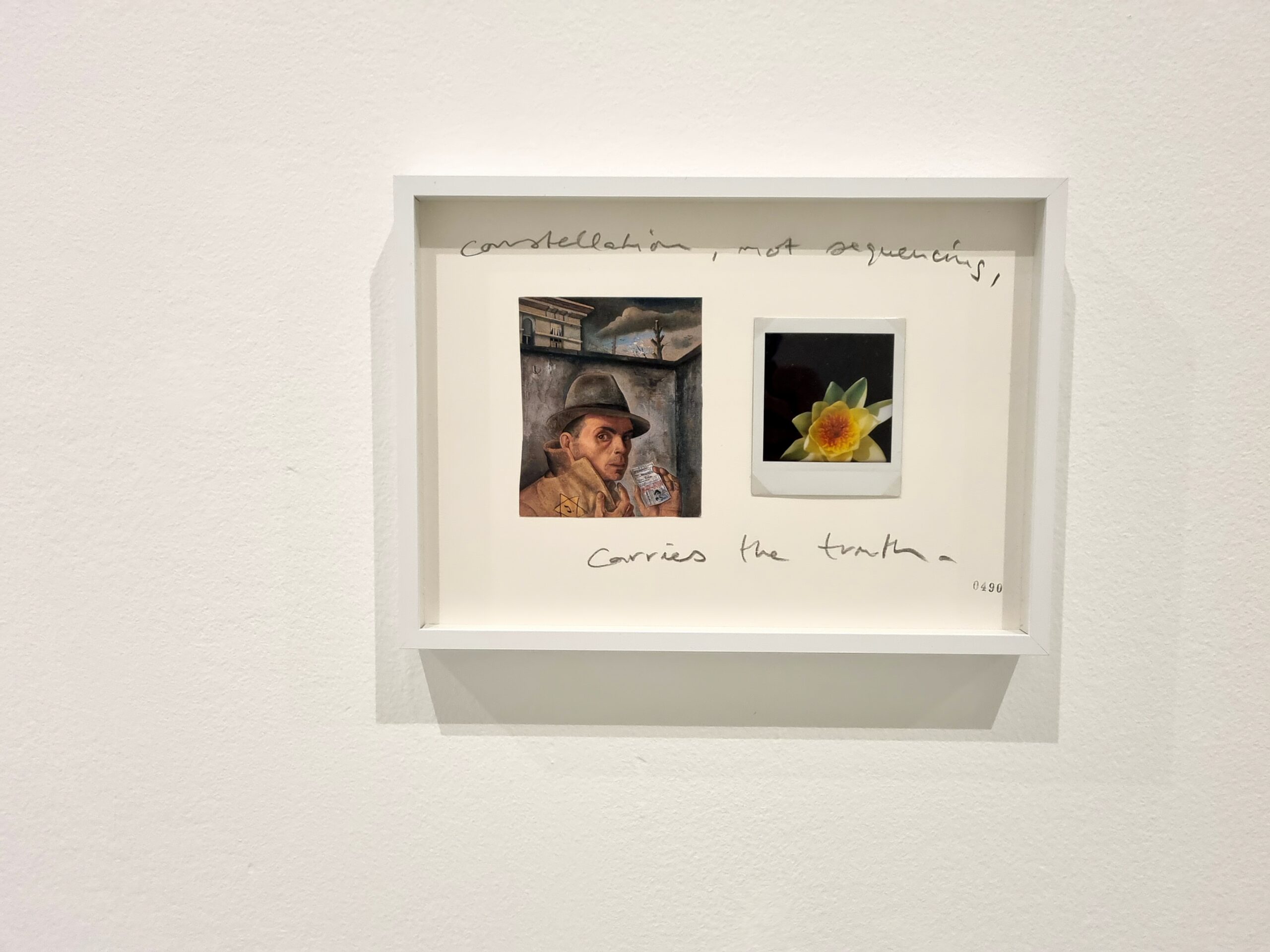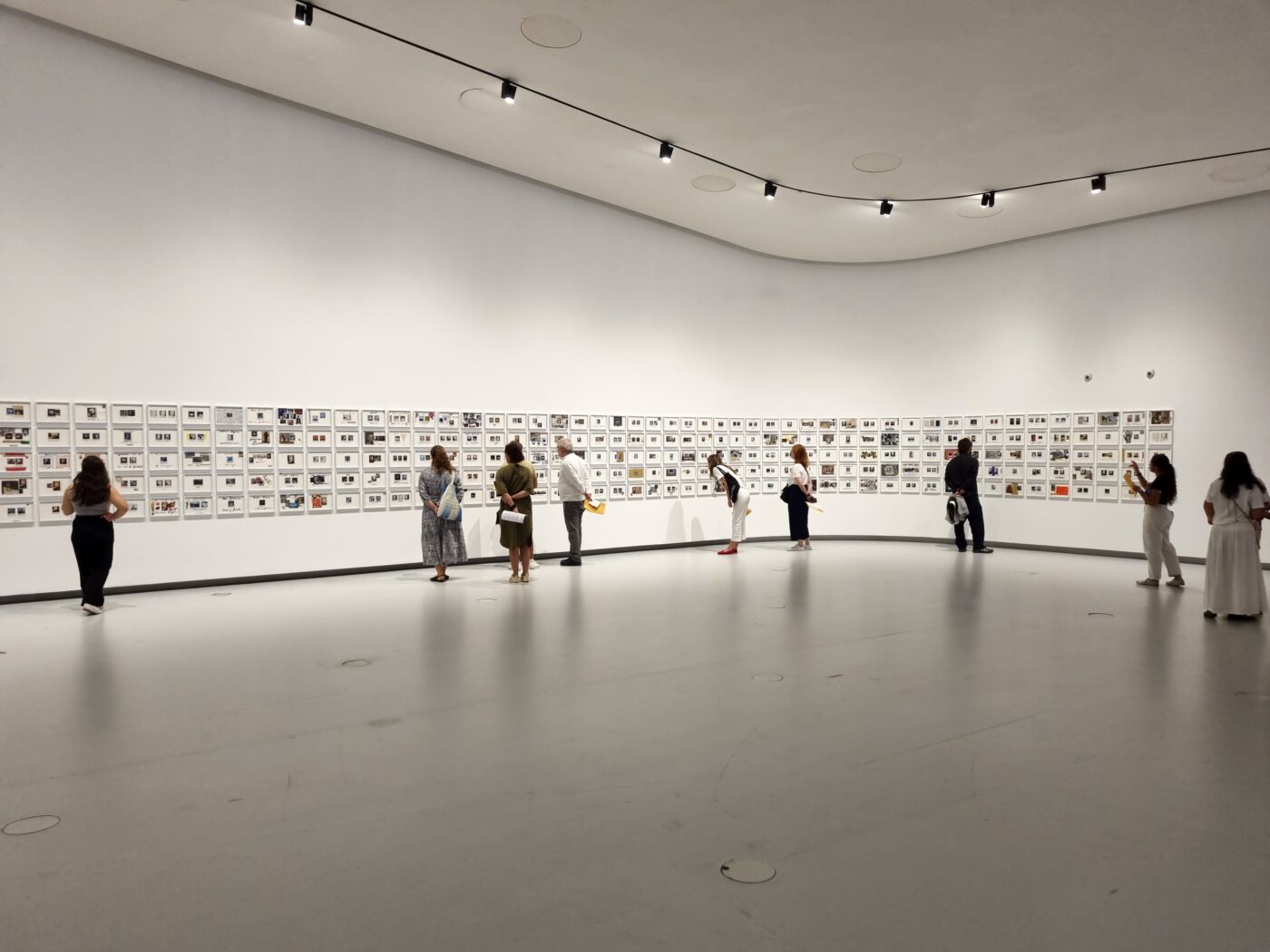Exhibition
From the day Roth died
"The days are numbered", by Daniel Blaufuks, at MAAT

On May 22, 2018, American writer Philip Roth died. From that day on, Daniel Blaufuks began to develop a visual-textual diary where, on simple A4 sheets, he comments on current events, listing the days and years that have passed. The days are numbered is the exhibition that the visual artist presents at MAAT, until the beginning of October.
All the “sheets” on display feature instant photographs, almost always accompanied by handwritten phrases in the languages the artist knows best, such as English, German, Portuguese or French; newspaper and magazine clippings; advertising flyers; or stamps. For Daniel Blaufuks, keeping the diary became the work of a lifetime.
The artist doubts whether these volumes should be called diaries. He prefers the name “non-diaries”, since “it is not intimate”, one does not learn much about him or his life in those pages.
“In the classic diary, you write ‘I woke up at 10 am’, ‘I went to breakfast’ or ‘I went to the cinema’. There isn’t that there. Every now and then I open the lid on my life a little bit, but I close it again immediately”, he says. It is, rather, a daily work, “because it is a daily exercise, which helps me think about photography. I do one sheet a day”, he adds, remembering that it all started the day Philip Roth, the author of American Pastoral or Of Human Stain, died.

“A chance, happy for me, not for him”, he explains, refusing that it had been a catalytic event. However, it was on that day that it all began, and the first “sheet” of the exhibition is, precisely, the one that reads “Philip Roth is now forever dead”. “I even think he might have liked it!”
Through the gallery
The walls of one of the rooms at MAAT Gallery are filled with frames. If the entire 2003 diary is displayed there, there are also some pages from 2018 to 2022 and many others from the current year. All of them, without exception, present fragments: fragments of his personal life, fragments of things he reads, of things he hears. There are also fragments of conversations and feelings. “That’s the right word: fragments. Each page of this diary is a fragment of my day”, he emphasizes.
In this work that appears to be “instinctive and instantaneous”, the textual notes are not mere captions for the photographs. “Sometimes image and text can collide; other times they can accompany each other. And there are still other times when the text raises more questions than it answers. This means that when I take the photo, I’m not thinking about what I’m going to write. I also happen to know what I’m going to write before I even take the photo. But, in truth, I think that the atmosphere is always the same, that is, on a sadder day, I am sadder and you can feel that in the photograph, as you probably feel in the text that accompanies it. And the same happens on a happier day, like a summer beach day, where everything is perhaps brighter.”

João Pinharanda, curator of the exhibition, says that Blaufuks’ work has always been based “around time and memory, whether family, historical or personal. By exposing his memory, his days and the days of the world intersect.” The photographer who, according to the curator, “reacts to what is around him by fighting the voracious race of time over things”, admits that “a diary is also an act of resistance”. “The day makes sense because I have a sheet to do, which allows me to always have this moment of alignment with everything that happens around me”, he concludes.
The exhibition The Days Are Numbered, by Daniel Blaufuks, can be visited at MAAT – Museum of Art, Architecture and Technology from Wednesday to Monday, until October 7. On September 5, between 3 pm and 6:30 pm, a masterclass will take place with the photographer, followed by a conversation with João Pinharanda. On the occasion of the exhibition, the book Os Dias Está Numerados (ed. Tinta-da-China) is published, for sale in the museum store.